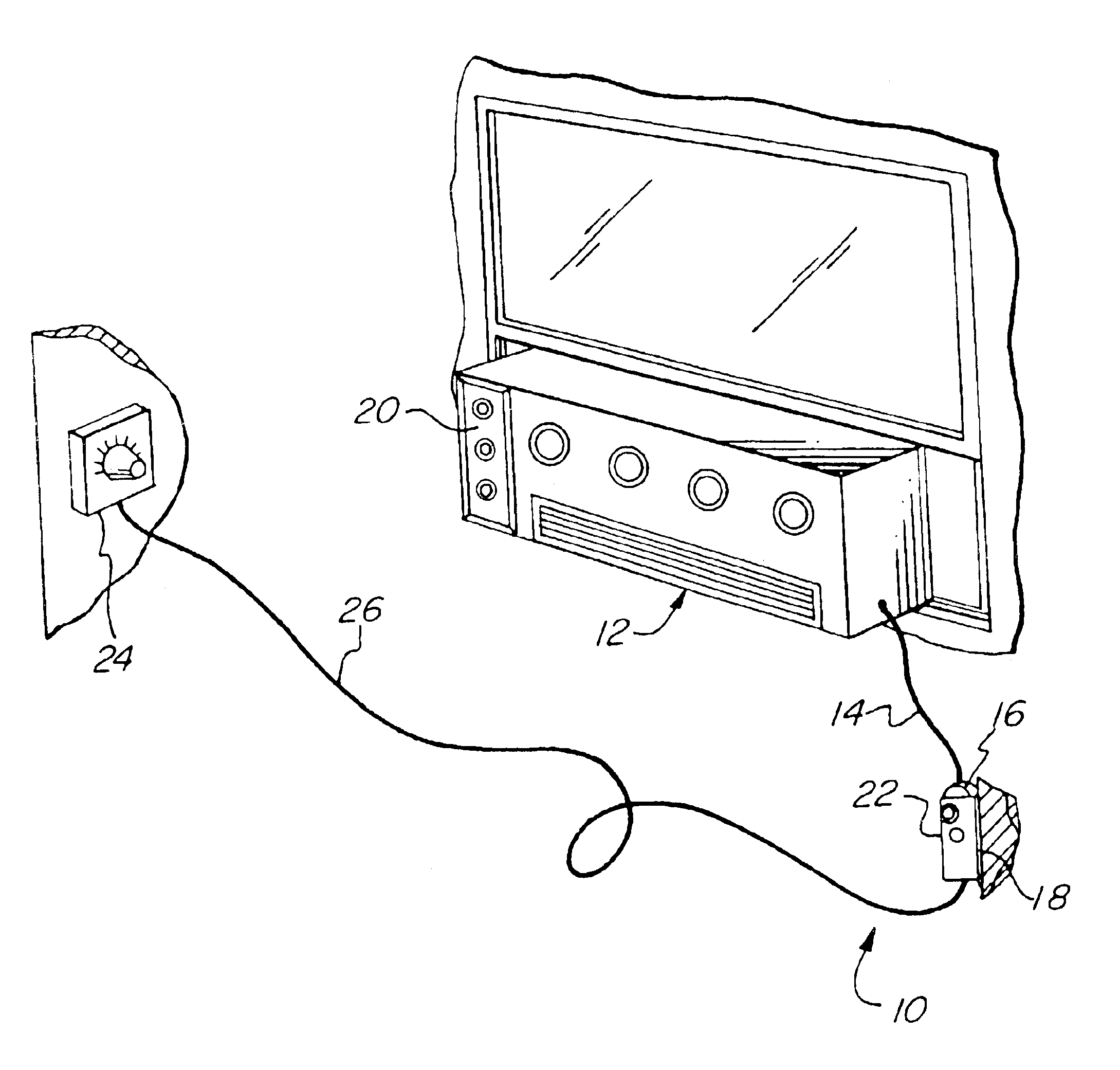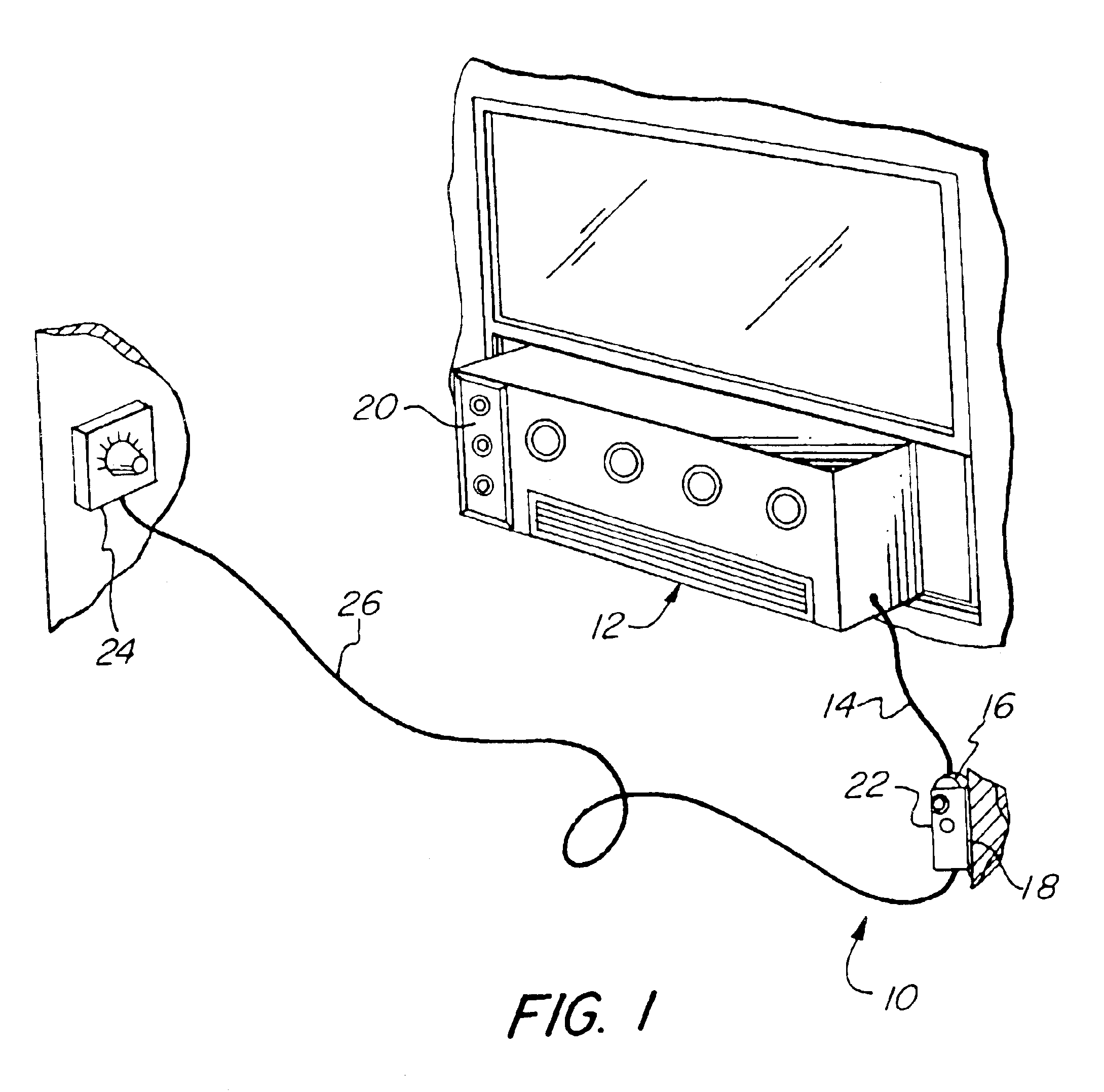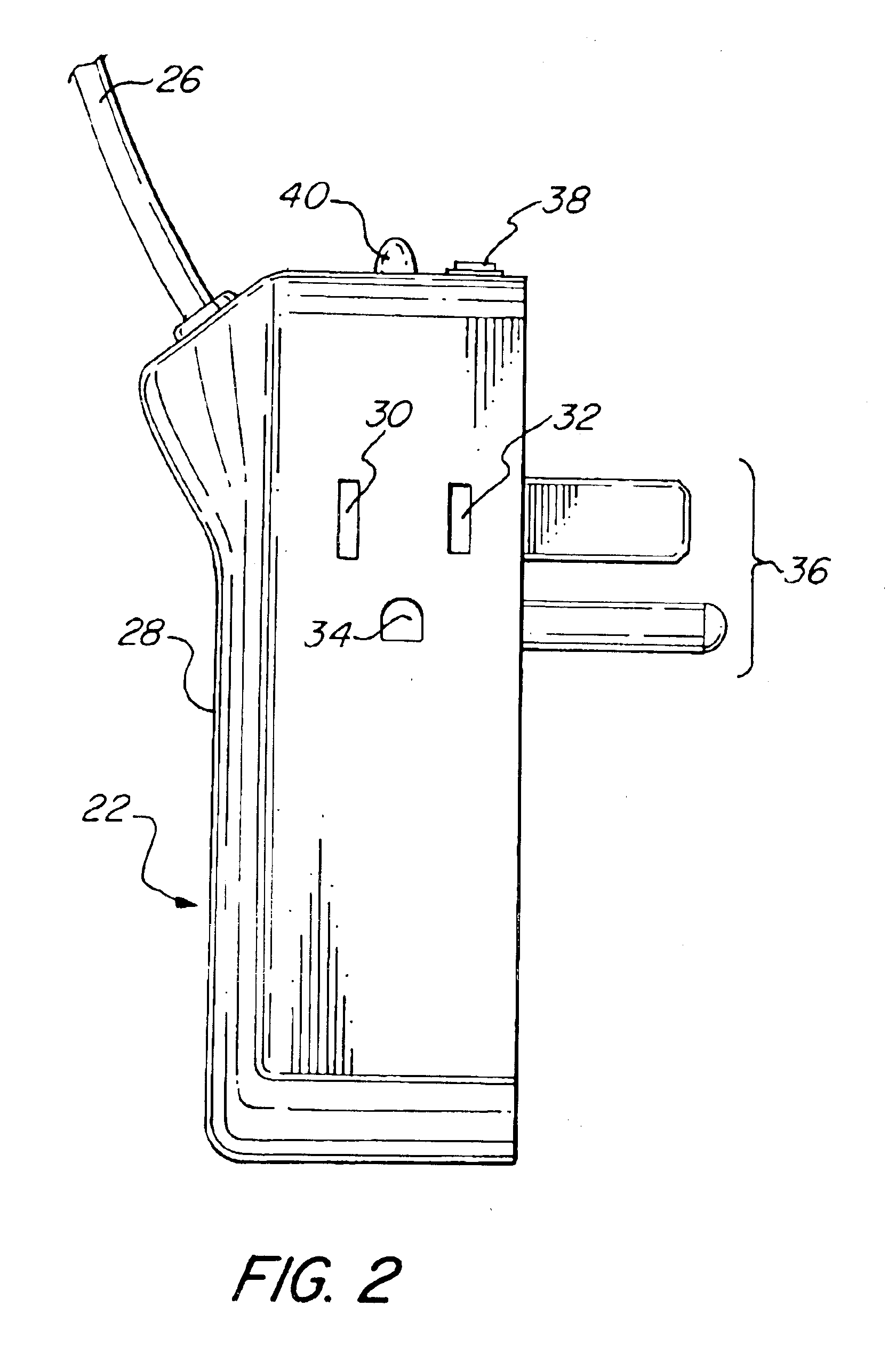Remote thermostat for room air conditioner
a remote thermostat and room air conditioner technology, applied in the direction of domestic cooling apparatus, heating types, instruments, etc., can solve the problems of overcooling of the room, unit fan not working, temperature sensor typically located in the air intak
- Summary
- Abstract
- Description
- Claims
- Application Information
AI Technical Summary
Benefits of technology
Problems solved by technology
Method used
Image
Examples
Embodiment Construction
Referring to FIG. 1, an air conditioner control assembly 10 for a room air conditioner 12 mounted in a window in accordance with the present invention is shown. The room air conditioner 12 has a power line 14 provided with a male plug 16 which normally would be inserted in an typical AC power socket 18. The room air conditioner 12 may or may not be provided with thermostatic controls 20 of its own as is known in the art. If such thermostatic controls 20 are provided, they will be set to a temperature lower than a lowest desired room temperature, so as not to interfere with operation of air conditioner control assembly 10.
Air conditioner control assembly 10 includes a control unit 22 and a remote thermostat 24 connected to control unit 22. Remote thermostat 24 may be connected to control unit 22 via a wire 26, typically a low voltage type wire, or may be wireless. Wire 26 may be of substantially length, it being recognized that it is desirable for wire 26 to have sufficient length to...
PUM
 Login to View More
Login to View More Abstract
Description
Claims
Application Information
 Login to View More
Login to View More - R&D
- Intellectual Property
- Life Sciences
- Materials
- Tech Scout
- Unparalleled Data Quality
- Higher Quality Content
- 60% Fewer Hallucinations
Browse by: Latest US Patents, China's latest patents, Technical Efficacy Thesaurus, Application Domain, Technology Topic, Popular Technical Reports.
© 2025 PatSnap. All rights reserved.Legal|Privacy policy|Modern Slavery Act Transparency Statement|Sitemap|About US| Contact US: help@patsnap.com



